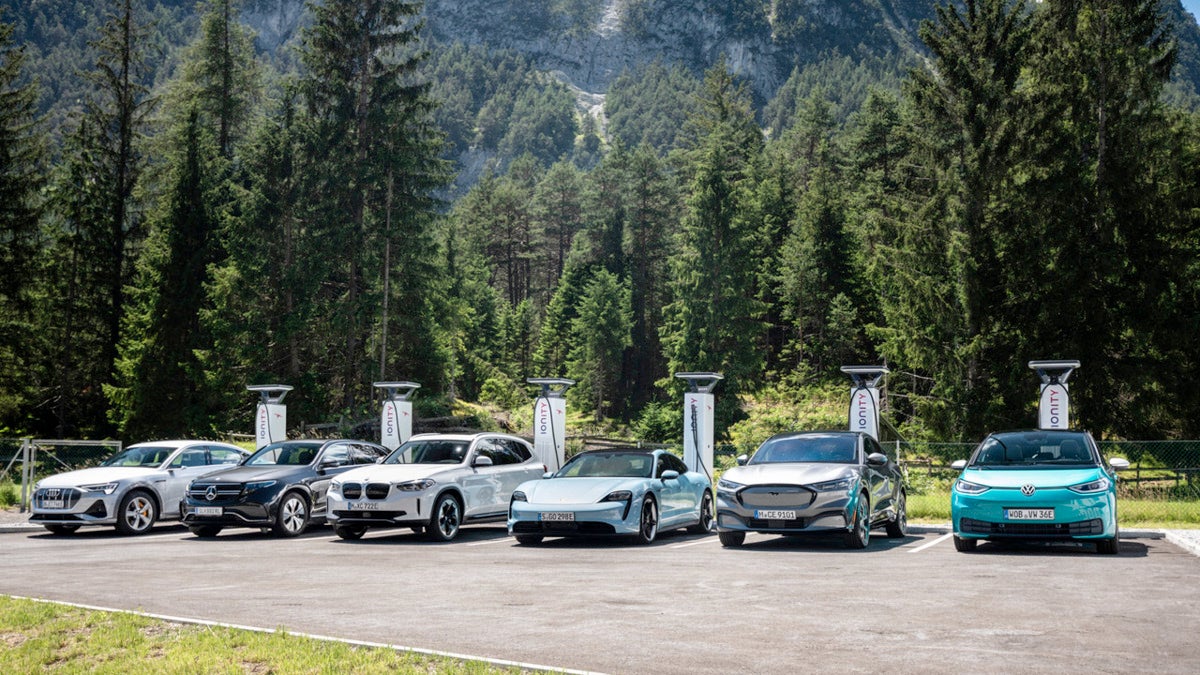
How will electric mobility operate in the future? How will charging infrastructure support the ever-increasing demand for electric vehicles (EVs)? And how do we make sure energy from renewable sources is available at any time to meet the enormous demand?
In the next five years alone, 400 battery-powered EV models will hit the market. As such, the industry is witnessing a growing conversation around charging infrastructure, its scope, extent and attractiveness.
Traditionally, pure availability of charging infrastructure and range anxiety were causes of concern for consumers still unsure about making the transition. But within the past two years, demonstrating the speed and size of the market, the landscape has changed. Range anxiety has faded, while questions of convenience, reliability, location and the all-round charging experience have taken precedence.
Future-proofing a rapidly expanding HPC network
Since IONITY’s first charging station opened in 2018, its high-power charging (HPC) network has grown to account for more than 300 stations, with over 1,200 individual charge points across a targeted European footprint of 24 countries.
Michael Hajesch, chief executive of IONITY, says: “Intense research and heavy investments into the locations of IONITY’s charging stations have been complemented by the development of state-of-the-art technologies, to ensure a future-proof and sustainable network.”
It only just started. With new EV sales forecast to reach 44 million vehicles a year by 2030, investment opportunities become clear
The resultant award-winning chargers offer up to 350kW of 100 per cent renewable energy and multi-brand compatibility, by using the European standard CCS (Combined Charging System).
Hajesch says: “This benchmark in terms of charging capacity can’t even be met by any presently available vehicle in the market. But considering the industry’s speed of trajectory, there is a need to be ready for future market growth and advancements in battery technology.”
Unlike traditional vehicles, EVs can be charged anywhere, at home, workplaces and throughout cities. From the start, IONITY has focused on what the company believes is the missing piece of the puzzle for widespread EV adoption: charging along motorways.
As a result, just three years after IONITY was founded, the challenge of long-distance travel has mostly been overcome.
Customer-centred design for everyday charging
“Location is key to establishing EVs as a viable alternative, incorporating factors such as site layout or digital services for payment.”
“These aspects need to be taken into account to fulfil a very real ideal that the charging experience improves our consumers’ journeys.”
While the company keeps building more stations across Europe, IONITY has started to develop a strategic growth path on how to improve and perfect their ‘energy stations’ of the future. Hajesch explains: “The beauty of emobility is it can be seamlessly integrated into everyday life and that’s one of our main focuses.”
“The other is all about quality. This means excellence in operations and perfecting the user experience: reliability, ease of use and a variety of payment options.”
IONITY’s ambitions and commitment to establishing a reliable EV charging infrastructure will pave the way for this transition from availability to habitual comfort of a network that customers will become familiar with in the years to come.
Hajesch continues: “The future of passenger road transport is 100 per cent electric. Now, the quality and quantity of charging infrastructure is key to convince customers this future is not only achievable, but has already begun.”
As IONITY continues to build and expand Europe’s leading HPC charging network, the constant increase in EV adoption means its work is only just starting. With new EV sales forecast to reach 44 million vehicles a year by 2030, investment opportunities become clear.
Hajesch concludes: “It’s an exciting time for IONITY. We’re a driving force behind the transition from installing EV charging infrastructure where needed, to it being so integrated in everyday life that it becomes second nature.”
For more information please visit ionity.eu
Promoted by IONITY

How will electric mobility operate in the future? How will charging infrastructure support the ever-increasing demand for electric vehicles (EVs)? And how do we make sure energy from renewable sources is available at any time to meet the enormous demand?
In the next five years alone, 400 battery-powered EV models will hit the market. As such, the industry is witnessing a growing conversation around charging infrastructure, its scope, extent and attractiveness.
Traditionally, pure availability of charging infrastructure and range anxiety were causes of concern for consumers still unsure about making the transition. But within the past two years, demonstrating the speed and size of the market, the landscape has changed. Range anxiety has faded, while questions of convenience, reliability, location and the all-round charging experience have taken precedence.

